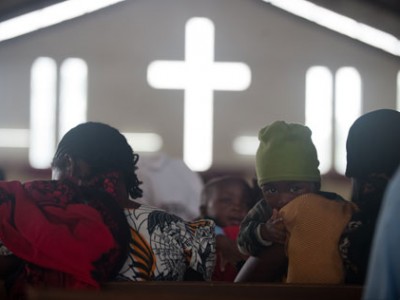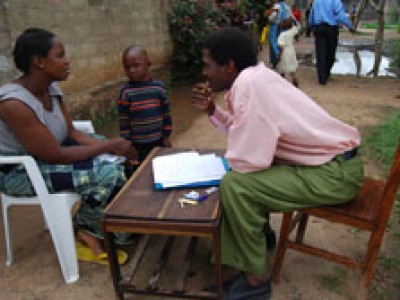Fighting Infant Mortality in Tanzania
Martha sits on the chair facing the window, arms crossed, and gives a great sigh of relief. She looks at her big tummy and realizes that the days have advanced very quickly. Not many days are left before she visits the clinic.
Martha is six months pregnant. She is expecting that perhaps this time she will hold a baby in her hands, and be able to breast-feed it until weaning age. If this happens, the baby will be her first surviving child. Martha has had two pregnancies at an interval of three years, but neither of the children were delivered safely.
She lost her first child through labor complications because she could not reach the maternal clinic early enough to get medical attention. Her second child died a few days after birth because of lack of proper care and medical treatment.
Martha is so alert and aware at this time to do all she can to have her child survive. She cannot withstand the horrible idea of losing her third child after nine months of painful pregnancy. And she wants to be respected and not mocked in the village and in the family of her husband. She hopes the child inside her will reverse this. (more…)
Continue Reading ›Cultural Change in the Maasai Community
The Maasai community has been rearing cattle for years, all their known lifetime and history.
In fact, there is a joke that goes around Tanzania about how the Maasai people claim that all the cows in the world belong to them, and the Maasai have the duty to return the cows to their natural home, in the Maasai community, which is why in the past there has been cattle rustling in the community.
Continue Reading ›
Overcoming Denominational Differences in Tanzania
About nine years ago, when Compassion began operating in Tanzania, we were received with mixed feelings by the church.
Some thought there is no genuine organization that can offer the benefits CI claims to offer to children. Some were not comfortable that we want different evangelical denominations to come together and have a common objective in releasing children from poverty in Jesus’ name.

Historic Registration in Tanzania: The 50,000 Registered Child
Compassion International Tanzania (CIT) registered* its 50,000 child two months ago on Februray 16.
This historic registration ushered in a new era for us. It was a moment to put down our tools, celebrate the Lord’s favor, and thank Him for what he has done and for His faithfulness. It was a milestone for the Tanzanian ministry, an achievement worth celebrating.
Now let’s see how we reached the 50,000 child mark and also learn about how our child registration process works.
The milestone occurred in Tabora, more than 650 kilometers from Arusha, where the head office of CIT is located. But the search actually began months earlier.
Finding Church Partners
Before going into a new area, CIT conducts country mapping to determine the level of poverty in one area as compared to another. Country mapping is necessary so we can determine where the greatest ministry need is.
After country mapping, we conduct a baseline survey to determine if the areas identified with a high degree of poverty have Christian churches whose mission matches ours.
This is critical because we work through the local church — it is the local church that actually implements the program and cares for the children. If there is no church, our ministry model won’t work, regardless of the degree of poverty that exists there.
We ask questions, such as:
- Does the church have classrooms to accommodate the children?
- Do they have people who can teach and work with children or who can learn to assist children?
- Are there peopleand children who can help the program continue?
This baseline survey helps us decide which areas and churches are a good fit. Of course, in all the stages we keep praying and asking God to lead us in the right path and to bring people who will be willing to sponsor children and release the resources needed.
After the baseline survey, we gather all the potential church partners for vision casting. In this gathering we share the importance of ministry to children and call on the church to awaken to the call of Jesus Christ to fulfill the Greatest Commandment.
After this, we choose the potential church partners and invite them to a partnership meeting. At this one-day meeting, it is time to pray together and for us to give relevant partnership documents to the new church partners.
If the partners agree on the conditions, they sign a partnership agreement with us. These partnership agreements give room to church partners to start preparing environments to begin the ministry. They start recruiting project workers and create a child ministry committee formed from church members.
The church has to find those able and qualified to work in the project as project coordinator, project accountant, project social worker, and project health worker.
Once all the project workers are chosen, they attend the “One-Month Child Ministry Foundation Course” that all project workers go through.
In this course, the newly recruited project workers are trained on how to implement the ministry and how to minister to each child individually.
They also learn what is expected of them and different ways and procedures of reporting and giving feedback to us. They get to know the organizational structure of CIT, the departments involved, and how each department works.
Screening and Registration
All this leads up to child screening and registration. (more…)


